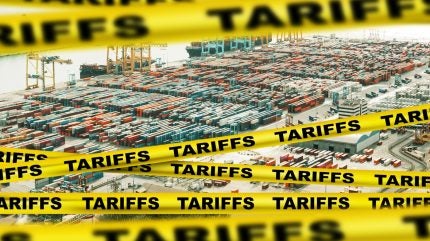
The AAFA’s reaction is a response to the recent executive order by President Trump, which extends the temporary reduction of retaliatory tariffs on US imports from China.

Discover B2B Marketing That Performs
Combine business intelligence and editorial excellence to reach engaged professionals across 36 leading media platforms.
Under the latest agreement, the tariff truce will now continue until 10 November 2025, allowing for the importation of apparel and other goods at the current lower tariff rates.
The US will uphold a 30% tariff on Chinese imports, while China will persist with a 10% tariff on American goods.
AAFA president and CEO Steve Lamar said: “We appreciate the administration’s continued engagement with China and the extension of the pause on heightened tariffs which will help to avert devastating consequences like product elimination and business closures. However, the constant cycle of deadline delays and vague deal terms has kept American companies and consumers stuck in the same holding pattern since 1 April. This pattern has and continues to stifle innovation, strategic decision-making, and long-term growth.”
According to the US trade group, the apparel, footwear, and accessories sector in the US provides direct employment to 3.5 million workers across the country.

US Tariffs are shifting - will you react or anticipate?
Don’t let policy changes catch you off guard. Stay proactive with real-time data and expert analysis.
By GlobalDataFootwear and apparel face an average effective tariff rate that exceeds the rate for all other imports into the US by more than fivefold.
Although fashion-related imports make up approximately 5% of total US imports, they account for over 25% of total import duties collected by the country.
Lamar also called for the inclusion of a non-stacking provision in future agreements with China, like those that are in place with Japan and the EU.
“Even with the pause on the worst-case rate, a 30% tariff on our largest trading partner is still untenably high. We can’t forget that these tariffs are being added on top of existing ones including the nearly century-old Smoot-Hawley MFN tariffs and the Section 301 tariffs. When stacked on top of these already steep tariffs, it amounts to double taxation on hardworking American families for everyday essentials like clothing and footwear,” Lamar stated.
The call from AAFA arrives after prolonged efforts by the association and various stakeholders advocating for reduced tensions and fairer trade agreements.
The group has argued that the prevailing tariff policies do not bolster US manufacturing within the textile and apparel sector, nor do they benefit the 3.6 million American workers employed in this industry.
Additionally, there is a looming deadline for the expiration of key trade preference programs; without legislative action from Congress, both the African Growth and Opportunity Act (AGOA) and the Haiti HOPE/HELP programmes are set to expire on 30 September.





